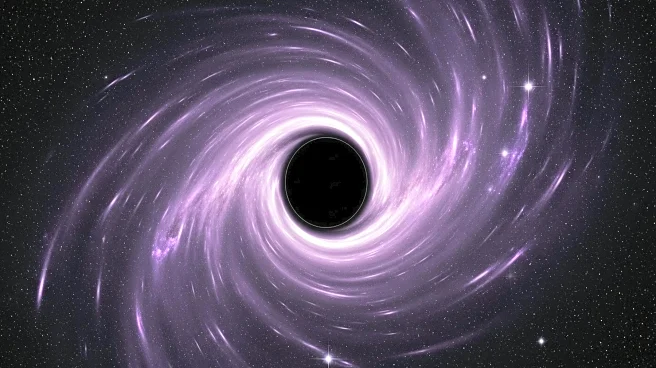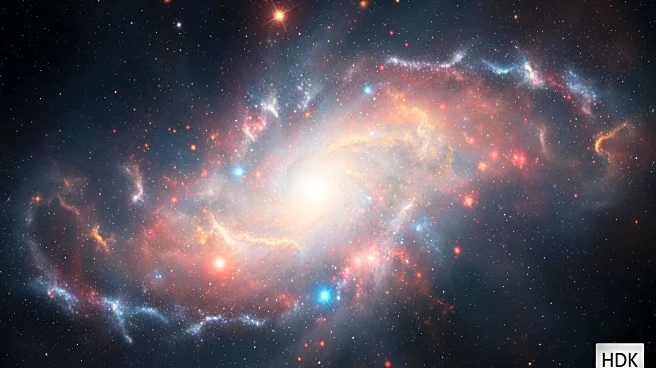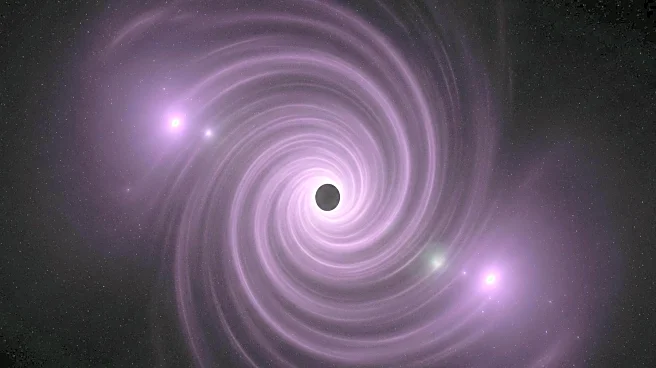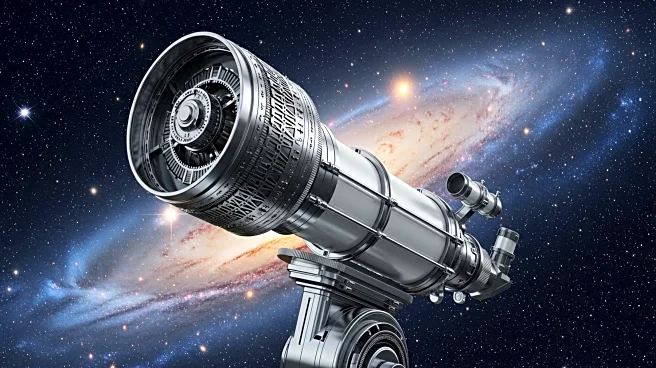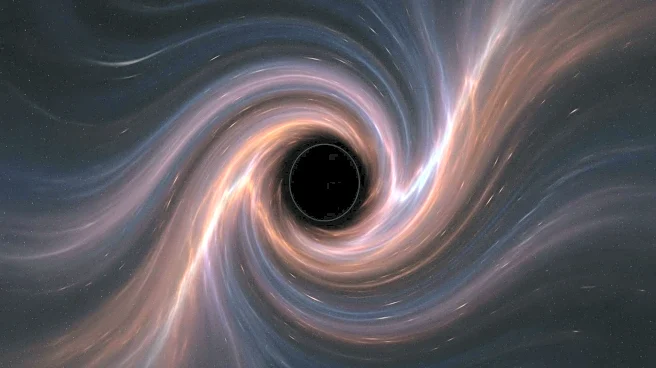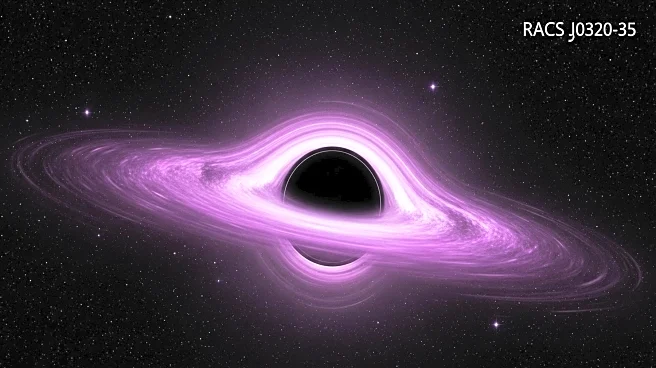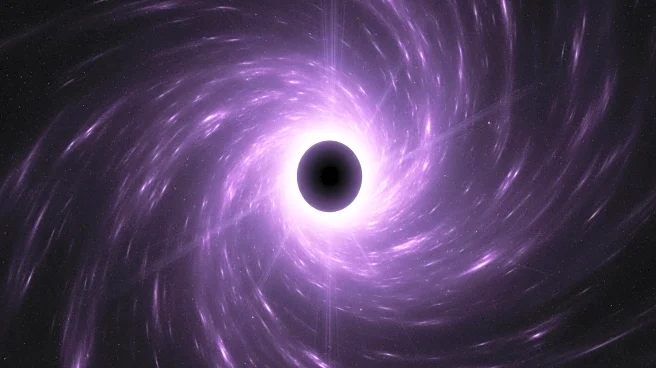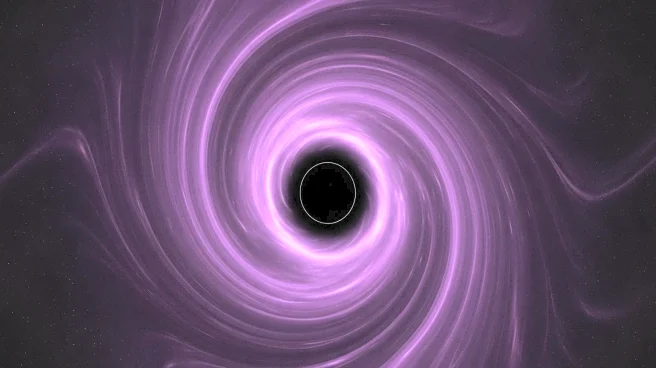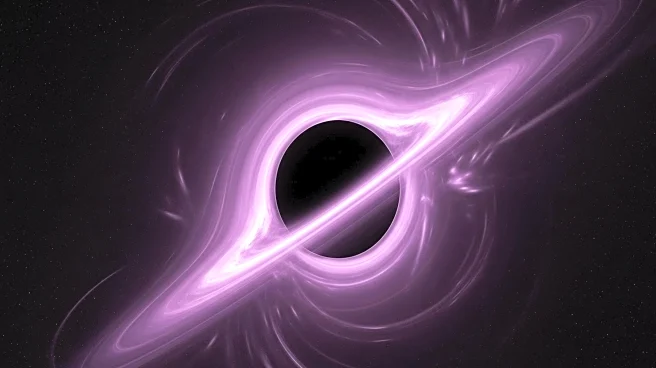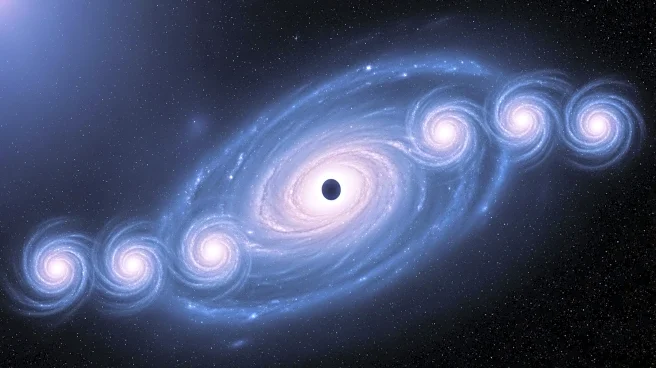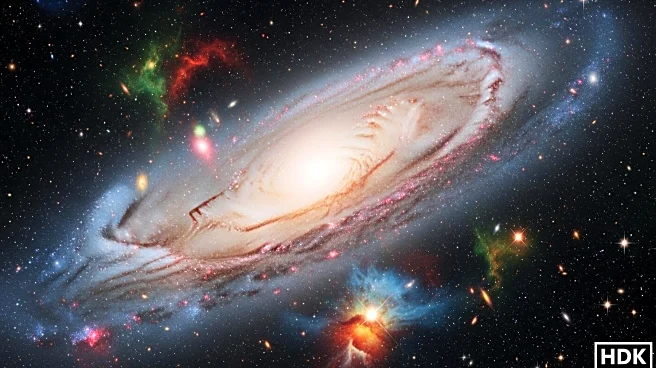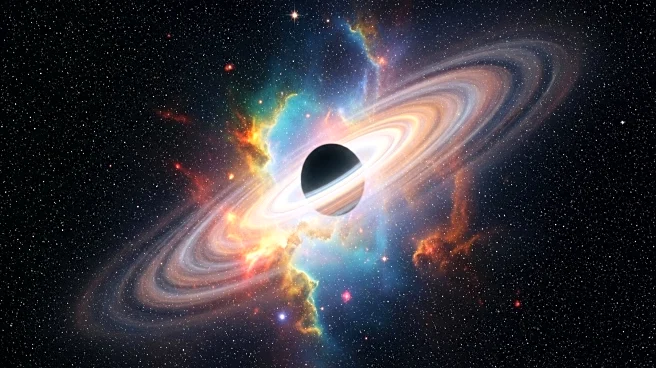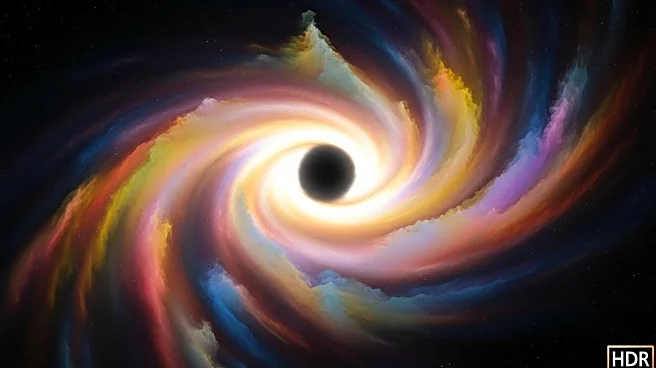What is the story about?
What's Happening?
A supermassive black hole in the quasar galaxy RACS J0320-35 is consuming material at 2.4 times the Eddington limit, the theoretical maximum rate. This discovery, led by astrophysicist Luca Ighina, challenges existing theories about black hole growth, suggesting that supermassive black holes could have formed much earlier in the universe's history than previously thought. The black hole's rapid growth may provide insights into how such massive entities developed in the early universe, potentially reshaping our understanding of cosmic evolution.
Why It's Important?
The discovery of a black hole growing at such an accelerated rate has significant implications for astrophysics. It challenges the current understanding of black hole formation and growth, suggesting that supermassive black holes could have formed more rapidly than previously believed. This finding could lead to new models of black hole evolution and provide insights into the conditions of the early universe. Understanding these processes is crucial for comprehending the role of black holes in galaxy formation and the broader dynamics of the cosmos.
What's Next?
Further research is needed to validate the findings and explore the implications of super-Eddington accretion. Scientists will continue to study the black hole using various observational techniques to gather more data. This research could lead to new models of black hole growth and inform future studies on the evolution of galaxies. The findings may also prompt a reevaluation of existing theories about the early universe and the formation of cosmic structures.
AI Generated Content
Do you find this article useful?
